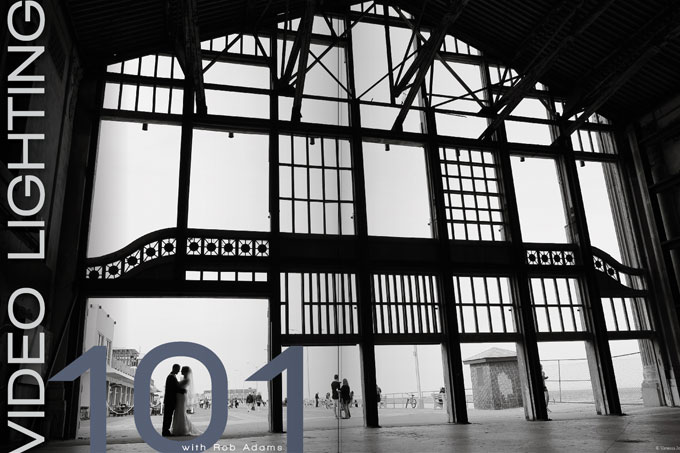video lighting tutorial

When I opted to join the thousands of event cinematographers making the jump to HD-DSLRs about four years ago, they completely changed my mindset and approach in a number of key areas of production. Most heavily in the area of seeing light the way I need to in order to create stunning images with this newfound, large-format sensor. I had a whole new plethora of pixels to work with and I wanted my images to look crisp and sharp. I loved being able to shoot at high ISOs and wide apertures. The issue was I had to compensate the way I lit certain scenes to account for this added capability.
These days HD-DSLRs are seriously amazing in low light, especially for cinematographers who, other than working with film, have never had digital capabilities that allowed us to push so far into the ISO scale. High ISOs traditionally meant unwanted noise and artifacts. Trouble is, video noise is not artistic, generally speaking. It looks like bad television reception and it’s distracting to the viewer and awful to work with in post. But while we can push higher and higher into new realms of ISO cleanly, shooting at these ISOs doesn’t always mean sharp, highly-dimensional images. In fact, when relying on only ambient light without supplementing your scene with artificial continuous lighting, that’s exactly what you may get–flatly lit images with no depth. This is where video lights come in and it’s good to know how to use them effectively.
For photographers adept at using off-camera flash, these concepts will seem familiar. After all, we are using the same light waves in video as in still photography, although we are applying the basic principals in a more four-dimensional setting, time. The use of continuous lighting in video goes beyond lighting a single subject. It’s about having light where you want it, when the lens needs it. I will outline four basic video lighting techniques and products that will hopefully stave off any fears you may have about purchasing a continuous lighting kit that will not only serve your video needs, but can help with your still shooting as well.




This Post Has One Comment
There is no link to the tutorial…just the above script?